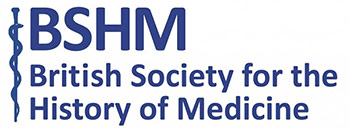For nearly two millennia, Theriac—a panacea developed in antiquity—was produced and praised across Europe. By the 19th century, it was dismissed as quackery. Today it has been reconstructed and will soon be tested. Danuta Raj explains.
In recent years, historical reconstruction has emerged as an innovative approach in research, bridging traditional historiography with hands-on practices from craftsmanship and the sciences. This interdisciplinary method allows scholars to re-examine and reinterpret primary sources through ‘practice’ and direct experience. By engaging with the material culture of the past—smelling, touching, and even tasting—researchers gain insights into historical realities that might otherwise remain obscure.
Historical reconstructions, especially those involving the recreation of ancient medicines, are truly fascinating. They expose researchers to sensory factors not usually included in texts: pungent smells, unusual textures and sometimes, let’s be honest, less-than-pleasant tastes. These experiences are often far from what we’re accustomed to, so first encounters can be… surprising, to say the least!
Today, Theriac is making a return in academic circles, no longer as a highly valued medicine but rather as a model for investigating historical medical and apothecary practices. Thanks to collaborations between historians and pharmacists, ancient formulations emerge again after centuries of oblivion.
Our historical-pharmaceutical team comprises four people from three universities. We call ourselves The Pracademics. The recipe we worked on has its own intriguing history. In 1630, in Toruń, Poland, amidst plague outbreaks, an apothecary named Paul Guldenius prepared a batch of Theriac to help the citizens survive the epidemic. He was granted official permission by authorities in Wittenberg, the best-known approval centre for that part of Europe. The recipe was preserved in municipal documents, allowing us, centuries later, to attempt a reconstruction of an authentically used version.
Making Theriac
Our first step was translating the recipe to stay as true as possible to the original craft. Then came the small task of gathering 71 ingredients from Europe, Africa, and Asia. Some, like St John’s wort or ginger, are still valued in medicine today. Others are so obsolete that obtaining them became an adventure in itself. Let’s just say that ordering obscure materials from the far corners of the internet led to my credit card details being stolen. Twice.
The preparation took a week of grinding and two days of mixing. We even used historical utensils from the pharmacy museum because no contemporary laboratory equipment quite fit the bill. Adjusting a 17th century recipe to a 21st century setting was truly challenging but immensely enjoyable. It’s great fun to watch when a text, previously seen as straightforward, turns out to be problematic. What exactly does “reasonably sticky” mean in practical terms?
At the end, we were rewarded with a blackish, sticky residue with a tar-like smell, matching descriptions of freshly prepared Theriac. Prepared in early spring 2024, our Theriac is currently maturing and will be ready in early 2025. Once matured, the Theriac will be subjected to laboratory analyses, which will tell even more about this intriguing medicine.
The 2024 conference, “Historical Reconstructions: Touching the Past” in Wrocław, Poland. (text in English) provided an exciting platform for interdisciplinary discussion. We plan to make this event regular, so if you’re intrigued by delving hands-on into history, stay tuned for the next edition!
Danuta Raj is a pharmacist working on historical reconstructions, and—more conventionally—phytochemistry of medicinal plants. Other team members include Jakub Węglorz, Katarzyna Pękacka-Falkowska, both historians, and Maciej Włodarczyk, a pharmacist.
Further reading
- Raj D., Pękacka-Falkowska K., Włodarczyk M., Węglorz J.; The real Theriac – panacea, poisonous drug or quackery?, J. Ethnopharmacol., 2021, Vol. 281, nr 114535; DOI: https://doi.org/10.1016/j.jep.2021.114535
- Ahnfelt N. O., Fors H., Wendin K.; Making and taking theriac: an experimental and sensory approach to the history of medicine. BJHS Themes, 2022, Vol. 7, 1-24; DOI: 10.1017/bjt.2022.6
- Di Gennaro Splendore B., The State Drug. Theriac, Pharmacy, and Politics in Early Modern Italy (Cambridge: Harvard University Press, 2025)










